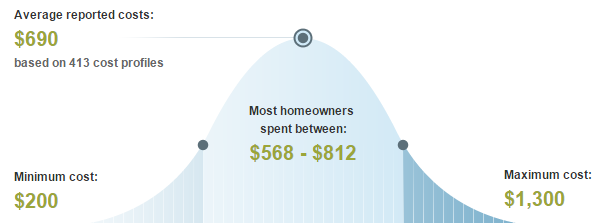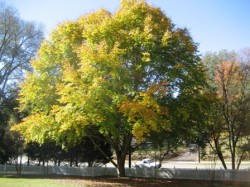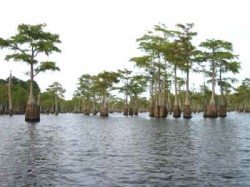Skip to a section:
- Costs – St. Petersburg, Florida arborists’ quotes will vary in price, but don’t pay too much. Compare their quotes against our data.
- FAQs – The tropical climate of Florida sustains many types of plants, but make sure you double-check your trees against the rules & lists of thriving or struggling trees, just to be safe.
- Services – Need more information from a pro? There are plenty waiting to help you today.
How Much Do Tree Services Cost in St. Petersburg?
Trees are a useful asset to any type of property. However, they can also be an expensive nuisance if they need to be removed from the area. The cost to remove, cut or trim a tree in the St. Petersburg, Florida area can vary based on several different factors including size, surrounding hazards and the health of the tree.

How Much Does Tree Removal Cost?
Trimming or removing the trees can help your lawn look healthier over time. Estimates for tree removal costs are on a per tree basis since the price can vary from one tree to the next. Most homeowners will pay anywhere from $550 to $760 for each tree removal. The lowest a homeowner can expect to pay is around $220 while the highest can be up to $1,300. The average reported cost for tree removal in St. Petersburg is $650.
How Much Does Stump Removal Cost?
The total cost to remove a large- or medium-sized stump from a lawn will include labor plus the price of equipment use. The cost to remove one large tree stump can range from $81 to $140 while a medium-sized stump will average from $78 to $139.
Average Cost of Tree Maintenance in St. Petersburg
Average tree maintenance costs can be from $370 up to $550. Trimming, cutting and pruning trees can help to promote growth and will make the trees more resistant to harmful diseases. The minimum cost for maintenance is around $100 while the maximum cost can be as much as $1,090. The average reported cost that St. Petersburg homeowners pay for tree maintenance services is $460.
St. Petersburg Tree Facts & FAQs
Florida is home to many beautiful trees that thrive in the tropical climate. The fortunate residents of St. Petersburg can enjoy all types of beautiful trees while relaxing in their own backyard or visiting their favorite Southern Florida locations. Those in need of removing unwanted trees from their property should follow the state and city regulations to remove their trees safely and effectively in order to avoid damage.
Tree Removal Regulations in St. Petersburg
There are certain species of trees that require a permit from the city of St. Petersburg to be legally removed from the property. Royal and Cabbage Palms that have 4 feet or more of clear trunk also require permits. These rules are for the trees listed below that are 4 inches in diameter at breast height or larger.
- Cedar
- Dogwood
- Elms
- Flatwoods plum
- Holly
- Magnolia
- Red bay
- Red pine
- Tupelo
- White pine
- Willow
Trees can be safely removed practically any time of year. However, if you have large trees with dead branches or trees that are located near power lines, it would be best to remove them before hurricane season begins in order to avoid unwanted damage. Concerning planting trees near power lines, the city’s rules are:
- The mature height and spread of the tree must remain 10 feet away from the overhead lower voltage power lines.
- Only small sized trees that remain below 15 feet or less can be planted around power lines.
- Medium-sized trees with a mature height of up to 40 feet should be planted at least 25 feet away.
- Large trees that have a mature height of 40 feet or more should be planted at least 50 feet away.
Common Trees

There are many different tree species that can be seen all throughout St. Petersburg. The state tree of Florida is the sabal palm (Sabal palmetto), also known as the cabbage palmetto. It became the state tree in 1951. It is the most widely distributed palm tree in the state. Conifers, palms and hardwoods are ideal for Florida landscaping and easily grow in the warm southern climate. Common trees include:
- Pond cypress (Taxodium ascendens)
- Cabbage palm (Sabal palmetto)
- Red maple (Acer rubrum)
- American beech (Fagus grandifolia)
Tropical fruit trees thrive in St. Petersburg thanks to the warm tropical climate. Some of the best trees to consider for landscaping include mango, avocado, lychee and papaya. The largest trees in the state are the cluster figs. They can measure upward of 650 inches in circumference and 100 feet tall. The smallest trees in Florida include decorative species such as dogwood trees that get no taller than 15 feet and dwarf palm trees.

Cypress trees are another tree species that are very popular all throughout the state of Florida. They can be used by homeowners to aid in storm water drainage and therefore are extremely beneficial during the heavy storm season. The lumber is naturally resistant to decay and the trees can grow very quickly, making them useful for lumber harvesters with little environmental impact.
Diseases & Difficult Trees in St. Petersburg
With fruit trees being plentiful in St. Petersburg, tree parasites and diseases can be very common. Some of the issues to look out for include leaf spots, wilt, heart rot, twig dieback & crown gall.
Since Florida is prone to hurricanes and heavy storms, large trees that can do serious damage to homes or cars should be avoided. These include:
- Box elder
- Bradford pear
- Elms
- Hickories
- Poplars
- Pecan
- White pine
- Willows
Plant Hardiness Zones in Florida
Here is the Florida plant hardiness zone map, as provided by the USDA:

Image credit:
American beech
Pond cypress
Local Tree Services in St. Petersburg
